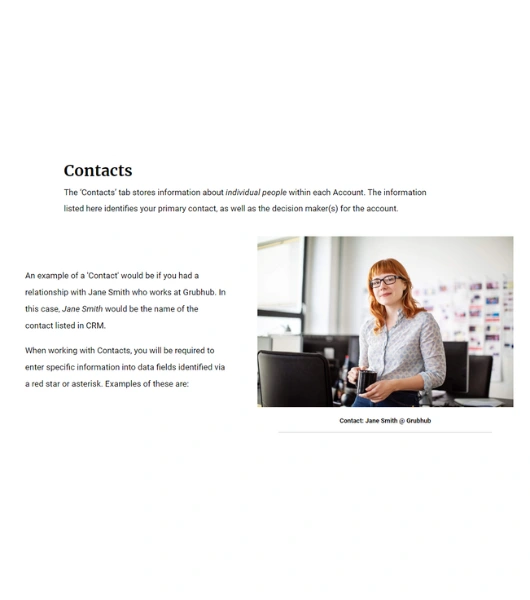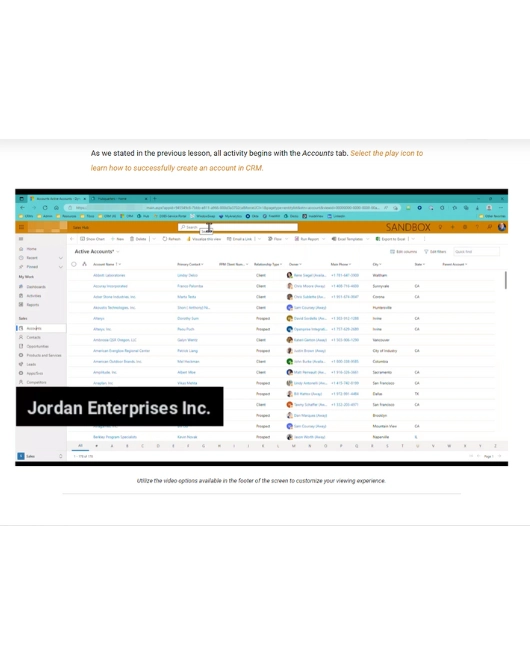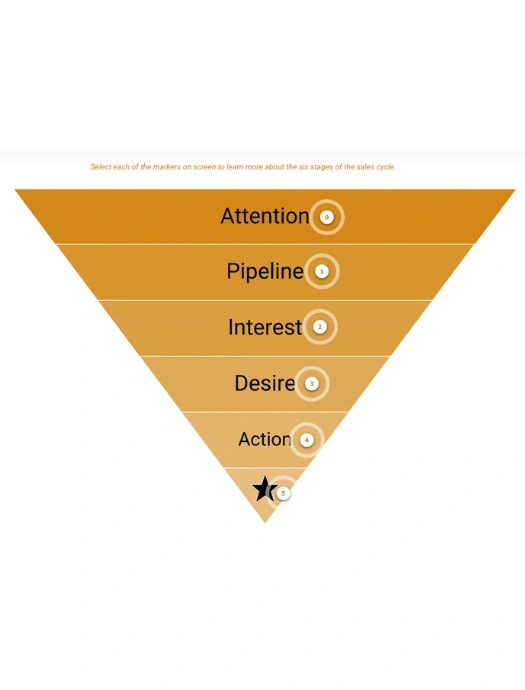Portfolio
Here is an example of a recent project in which the client was very pleased with the training solution that was provided. This page will walk you through the process and approach I took to meet this client’s need.
THE PROBLEM
A major player in the accounting and finance industry was experiencing pushback from its employees about a new Customer Relationship Management (CRM) platform the company had invested in to improve its overall business practices. Despite training and purchasing multiple licenses for users across the organization, many were not using the program, choosing to revert to personal tracking and lead-generation methods they’d used in the past. This was disconcerting to leadership as they had invested a lot of time and resources into the CRM software with the hope of making it the go-to business solution for the organization.



ANALYSIS PERFORMED
A needs analysis revealed that many employees felt the program was laborious and not intuitive. Employees that were using it were often doing so incorrectly. This resulted in the business unit needing to consistently correct errors in the system while investing additional capital in conducting one-off training sessions with users across the company. From this analysis, a determination was made that employees (i.e., the learners) needed to be trained on 1) “why” the platform was the organization’s preferred solution and the importance of its utilization — both micro and macro — and 2) “how” utilization of the CRM would be beneficial to both them personally and the organization at large. A further determination was made to focus the training on the four essential features that were of the highest importance to the organization. It would also consist of a separate lesson focused on custom configurations designed for efficiency and time-saving benefits.



LEARNING SOLUTION PROVIDED
What was created:
- A fully responsive, asynchronous, e-learning module that learners could complete anytime, anywhere, and on any device
- An instructional approach using Merril’s Principle of Instruction, wherein a fictitious, use-case company was employed to demonstrate to the audience how to perform the “need-to-know” actions when working in the CRM platform
- A video-based, micro-learning, tutorial approach focusing on how to complete specific entries.
- Short, digestible, and accessible lessons wherein learners could revisit the training according to their specific need
- An experiential and exploratory solution wherein a sandbox was provided for learners to safely practice the actions for themselves, reinforcing what they had learned.






DEVELOPMENT TOOLS USED
- Articulate 360 for e-learning development (Rise and Storyline)
- TechSmith Camtasia for video recording and editing
- Canva for custom image creation
- Microsoft 365 for content blueprinting, creation, and storyboarding
- Trello for project management and tracking of deliverables
- Zoom for needs analysis and discovery sessions with subject matter experts/stakeholders

WHY THIS SOLUTION WORKED
- Upon launch of the module across the organization, learners would have access to the training 24/7/365.
- Upon viewing the video tutorials, learners were allowed to “try it out for themselves,” completing the necessary actions they would need to do on the job.
- A sandbox environment was provided for learners to practice in and explore the CRM software further.
- Learners were asked to complete a series of activities to achieve a course completion status, which helped them to “connect the dots” and reinforced desired behaviors.
- The business leadership unit no longer needed to conduct one-off training sessions because it could now direct staff to the e-learning solution. This led to time and resource savings for this group.
- With a foundational, instructional offering available, business focus could now be placed on higher level applications and functionality of the software for specific users.





THE PROBLEM
A major player in the accounting and finance industry was experiencing pushback from its employees about a new Customer Relationship Management (CRM) platform the company had invested in to improve its overall business practices. Despite training and purchasing multiple licenses for users across the organization, many were not using the program, choosing to revert to personal tracking and lead-generation methods they’d used in the past. This was disconcerting to leadership as they had invested a lot of time and resources into the CRM software with the hope of making it the go-to business solution for the organization.



ANALYSIS PERFORMED
A needs analysis revealed that many employees felt the program was laborious and not intuitive. Employees that were using it were often doing so incorrectly. This resulted in the business unit needing to consistently correct errors in the system while investing additional capital in conducting one-off training sessions with users across the company. From this analysis, a determination was made that employees (i.e., the learners) needed to be trained on 1) “why” the platform was the organization’s preferred solution and the importance of its utilization — both micro and macro — and 2) “how” utilization of the CRM would be beneficial to both them personally and the organization at large. A further determination was made to focus the training on the four essential features that were of the highest importance to the organization. It would also consist of a separate lesson focused on custom configurations designed for efficiency and time-saving benefits.



LEARNING SOLUTION PROVIDED
- A fully responsive, asynchronous, e-learning module that learners could complete anytime, anywhere, and on any device
- An instructional approach using Merril’s Principle of Instruction, wherein a fictitious, use-case company was employed to demonstrate to the audience how to perform the “need-to-know” actions when working in the CRM platform
- A video-based, micro-learning, tutorial approach focusing on how to complete specific entries.
- Short, digestible, and accessible lessons wherein learners could revisit the training according to their specific need





Living Room
This is a short description elaborating the service you have mentioned above.





Kitchen
This is a short description elaborating the service you have mentioned above.





Office Space
This is a short description elaborating the service you have mentioned above.





Bedroom
This is a short description elaborating the service you have mentioned above.





